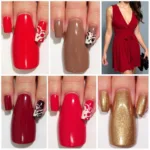Choosing the right color for your bluebird house can significantly impact its success in attracting these beautiful birds to your yard. While bluebirds aren’t particularly picky about color, understanding their preferences and how color affects their nesting habits can help you create the perfect bluebird haven. Let’s explore the ideal color choices for a bluebird house and discover how to make your backyard a welcoming sanctuary for these vibrant feathered friends. After reading this, you might want to find out what color attracts birds in general.
The Best Colors for Bluebird Houses
Contrary to popular belief, painting your bluebird house bright blue isn’t the best strategy. Bluebirds aren’t attracted to the color blue in the same way humans are. Instead, they prefer more natural, earthy tones that blend in with their surroundings.
-
Natural Wood: Leaving your bluebird house unpainted, with the natural wood grain showing, is often the most effective approach. This mimics the natural cavities bluebirds typically nest in and provides excellent camouflage against predators.
-
Earth Tones: If you prefer to paint your bluebird house, opt for muted earth tones like browns, grays, and dull greens. These colors help the house blend seamlessly into the environment, offering protection and a sense of security for nesting bluebirds.
Colors to Avoid for Bluebird Houses
While bluebirds aren’t extremely color-sensitive, certain colors can be detrimental and should be avoided.
-
Bright Colors: Avoid vibrant colors like bright reds, yellows, and oranges. These colors can attract unwanted attention from predators and make the bluebird house stand out, increasing the risk of nest disturbance.
-
Dark Colors: Dark colors, especially black, absorb heat and can make the inside of the bluebird house dangerously hot, particularly in warmer climates.
-
White: While seemingly innocuous, white can reflect too much light and make the interior of the house overly bright, potentially disturbing nesting bluebirds.
Why Camouflage Matters for Bluebird Houses
What color should bluebird houses be to best protect them? Camouflage is crucial for bluebird house success. It helps protect the nesting birds and their young from predators like house sparrows, raccoons, and snakes. A well-camouflaged house provides a sense of security, encouraging bluebirds to build their nests and raise their families without fear of disturbance. You can learn more about painting your birdhouse by checking out what color to paint birdhouse.
Does the Color of a Bluebird House Attract Bluebirds?
No, the color of a bluebird house doesn’t directly attract bluebirds. They are cavity nesters and are primarily drawn to the shape and size of the entrance hole, the height and location of the house, and the surrounding habitat. However, choosing the right color, or lack thereof, can significantly impact the safety and security of the nest, contributing to successful breeding.
What Color Birdhouse Attracts Birds?
While specific bird species have varying preferences, many birds are attracted to natural-looking birdhouses. This article on what color birdhouse attracts birds provides more detailed information.
“Choosing a natural or camouflaged color for your bluebird house provides a sense of security for the birds, mimicking their preferred natural nesting sites,” says Dr. Emily Carter, an ornithologist specializing in avian nesting behavior.
Choosing the Right Materials for Your Bluebird House
Besides color, the material of your bluebird house plays a vital role in its success. Untreated cedar, pine, or cypress are excellent choices as they are naturally weather-resistant and provide good insulation. Avoid using treated lumber as the chemicals can be harmful to birds.
What Colors Attract Bluebirds?
What colors attract bluebirds? Although house color doesn’t attract bluebirds, they are attracted to the mealworms and other insects you may offer near the house.
“The most important factor in attracting bluebirds is providing a safe and suitable nesting environment. The right house placement and surrounding habitat are key,” adds Dr. Carter.
Conclusion
Choosing the right color for your bluebird house isn’t about attracting them with vibrant hues but rather providing a safe, camouflaged, and thermally appropriate environment. Natural wood or muted earth tones are the best options, helping your bluebird house blend seamlessly into its surroundings and offering the best protection from predators and harsh weather. By prioritizing safety and security, you’ll create an ideal nesting site that welcomes bluebirds to your backyard for years to come. What color should a bluebird house be? Natural and unobtrusive.
FAQ
- What is the best color for a bluebird house? Natural wood or muted earth tones.
- Should I paint my bluebird house blue? No, bluebirds are not attracted to the color blue.
- What colors should I avoid for a bluebird house? Bright colors, dark colors, and white.
- Why is camouflage important for a bluebird house? It protects the birds from predators.
- What materials are best for a bluebird house? Untreated cedar, pine, or cypress.
- What attracts bluebirds to a house? The size and shape of the entrance hole, house placement, and surrounding habitat.
- What should I do if I see a predator near my bluebird house? Contact a local wildlife control expert for advice.
Further Questions
- How do I attract bluebirds to my yard?
- What do bluebirds eat?
- Where should I place my bluebird house?
For further assistance, contact us at Phone Number: 0373298888, Email: [email protected] or visit us at 86 Cau Giay, Hanoi. We have a 24/7 customer service team.

